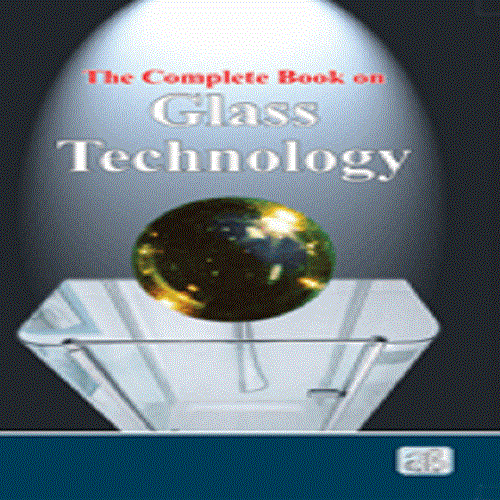Call us: 08042307456
The Complete Book on Glass Technology

X
Product Description
Glass is an amorphous solid usually formed by the solidification of a melt without crystallisation. It is an inorganic product of melting, which has been cooled to rigid state without crystallization. Melting is in fact the sole large scale industrial method of glass making. Glass is being used worldwide and has various applications. They are typically brittle and optically transparent. It is widely used in buildings and having industrial applications. The presence of glasses in our everyday environment is so common that we rarely notice their existence. Glass, as a substance, plays an essential role in science and industry. There are various methods of glass making other than melting for example condensation of vapours, conversion of crystals to an amorphous form using mechanical means or irradiation with fast neutrons, dehydration and sintering of gels, etc. Silica (the chemical compound SiO2) is a common fundamental constituent of glass. The properties of glass can be varied and regulated over an extensive range by modifying the composition, production techniques, or both. In any glass, the mechanical, chemical, optical, and thermal properties cannot occur separately. Instead, any glass represents a combination of properties, and in selecting an individual glass for a product, it is this combination that is important. As an architectural element, glass has become the quite essential product for your home or building. The applications of glass are limited only by your imagination; glass has many applications both internal and external that play a vital role in the function and design of your project. Industrially produced glasses can be divided into groups according to various criteria: composition, appearance, properties, application, method of forming etc. According to their chemical composition glasses are classified as silica glass (quartz glass), water (soluble) glass or sodium silicate glass, crystal glass, heat resistant glass, low alkali glass etc. Glass is finding ever wider applications in modern technology; sealing glasses which have been in use for many years, serve in vacuum tight joining of glass to metal, especially in vacuum electronics, in nuclear technology (protection from radiation, immobilization of radioactive waste by fusion into a chemically, resistant glass, etc.), in agriculture (as carrier of fertilizers with long term effects) and a number of possible application in electronics and many more.Some of the fundamentals of the book are structure of glass, structure of special melts and glasses, composition of glass, glass formation, crystallization and liquid, optical properties, theoretical strength of glasses, practical strengths of glasses, flaw sources and removal, viscosity of glass forming melts, theoretical principles of glass melting, chemical reactions occurring in glass melting, dissolution of solids in the melt, flow of glass in melting furnaces, physical chemical factors in sol gel processing, deposition of transparent non crystalline, metal oxide coatings by the sol gel process etc.
The present book covers different important parameters of glass technology. The book is comprehensive guide for researchers, technologists, new entrepreneurs and professionals.
Enter Buying Requirement Details
 English
English Spanish
Spanish French
French German
German Italian
Italian Chinese (Simplified)
Chinese (Simplified) Japanese
Japanese Korean
Korean Arabic
Arabic Portuguese
Portuguese